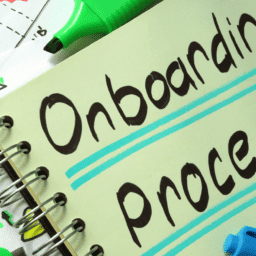Paperless onboarding has emerged as a critical component in the staffing and recruitment industry in the past few years. This innovative approach streamlines the hiring process and significantly enhances onboarding new employees’ overall efficiency and accuracy. As the recruitment landscape continues to evolve, embracing paperless onboarding has become an imperative for organizations seeking to maintain a competitive edge.
Paperless onboarding for staffing agencies represents a significant leap from traditional, paper-based processes. It involves using digital tools to automate and manage the collection of important documents electronically throughout the hiring process. This approach caters to the various stages of recruitment, from candidate qualification to the final placement and onboarding of employees for specific roles.
Key Components of Paperless Onboarding
- Applicant Onboarding (AOB) and Employee Onboarding (EOB): These two facets of the paperless onboarding suite address different stages of the hiring process. AOB focuses on initial candidate engagement and qualification, while EOB deals with the final stages of employee placement and integration into the organization.
- Electronic Capture and Storage: This feature eliminates the need for physical paperwork, allowing agencies to electronically capture, store, and manage all documents related to the onboarding process.
- Custom Form Creation and Sending: Agencies can create and dispatch custom forms as needed, ensuring that all necessary information is collected efficiently and accurately.
- Reduction of Manual Data Entry: By minimizing manual data entry, paperless onboarding reduces the risk of human error and saves significant administrative time.
- Real-time Notifications: Up-to-the-minute notifications keep all parties informed throughout the onboarding process, ensuring timely actions and responses.
- Security of Sensitive Information: Keeping all personal and sensitive information secure is paramount, and paperless onboarding systems provide robust security measures to protect this data.
- Auto-population of Tax Fields: With EOB, critical tax-related fields are auto-populated, reducing the time spent on filling out forms and ensuring accuracy.
- Streamlined Overall Process: By integrating these features, the entire onboarding process becomes more streamlined, saving time and resources.
The Business Benefits of Going Paperless
Adopting a paperless onboarding system offers several tangible benefits:
- Enhanced Efficiency: Automating the onboarding process significantly speeds up the time from candidate selection to their start date.
- Accuracy and Compliance: Digital forms reduce the likelihood of errors and ensure compliance with employment laws and regulations.
- Improved Candidate Experience: A smooth and efficient onboarding process enhances the candidate’s experience, reflecting positively on the employer’s brand.
- Cost Reduction: By reducing the reliance on physical documents, organizations can cut costs associated with printing, storage, and transportation of paperwork.
- Environmental Sustainability: Going paperless is an environmentally friendly approach, reducing the carbon footprint associated with paper-based processes.
Meeting the Demands of a Dynamic Workforce
In industries with high turnover or those requiring rapid placement of temporary staff, like healthcare or industrial sectors, the speed and efficiency provided by paperless onboarding are invaluable. It allows staffing agencies to quickly build a ‘bench’ of qualified candidates, ready to be placed as soon as opportunities arise, ensuring they stay ahead in a competitive market.
The shift to paperless onboarding is more than a trend; it’s a strategic move towards more efficient, accurate, and compliant recruitment practices. In the fast-paced world of staffing and recruitment, where every second counts, paperless onboarding is not just a convenience but a necessity. It represents a significant step forward in modernizing recruitment processes, providing a robust foundation for organizations to build upon as they navigate the complexities of talent acquisition in the digital age.





